Archived Content
Information identified as archived on the Web is for reference, research or recordkeeping purposes. It has not been altered or updated after the date of archiving. Web pages that are archived on the Web are not subject to the Government of Canada Web Standards. As per the Communications Policy of the Government of Canada, you can request alternate formats on the Contact Us page.
Red Ring Rot
Phellinus pini (Thore:Fr.) Ames
(= Fomes pini (Thore:Fr.) Fr.)
Basidiomycotina, Aphyllophorales, Polyporaceae
Hosts: In B.C., Phellinus pini has been reported on amabilis, grand, and subalpine fir, western larch, black, white, Engelmann, and Sitka spruce, jack, lodgepole, ponderosa, and western white pine, Douglas-fir, western redcedar, yellow cedar, and western and mountain hemlock. In other parts of North America it has also been found on maple, alder, birch, yellow cedar, juniper, oak, and yew.
Distribution: This fungus is widely distributed throughout the range of its hosts in B.C.
Identification: Sporophores are hard, woody, perennial, and hoof-shaped to bracket-like or may assume an effused-reflexed form when developing on the lower surface of branches (Figs. 20a, 20b, 20c, 20d). Fruiting bodies range in size up to 9 x 13 x 8 cm. The upper surface is zoned and light to dark brown, with an acute margin. The lower surface is light brown and poroid; the pores are irregular in outline or daedaloid, 2-3 per mm. The context is yellow-brown. Punk knots and swollen knots, which are filled with a yellow-brown mycelial mass represent early or abortive stages in the development of the sporophore.
The incipient stage of decay appears as a red stain in the heartwood (Fig. 20e). In cross section, a well-defined ring often forms, hence the common name "red ring rot." As decay develops, spindle-shaped zones of white fibers are produced running parallel to the grain (Fig. 20f). The surrounding wood is discoloured but firm. The presence of these characteristic white pockets has led to a number of additional common names including honeycomb rot, white pocket rot, or white pitted rot. Dark zone lines may be present.
Microscopic Characteristics: Hyphae in the context of the fruiting body simple septate, hymenial setae abundant, 40-50 x 10-14 µm, basidiospores IKI-, 4.5-7 x 3.5-5 µm. Culture growth slow, mat white to buff, yellow or brown, reverse darker, laccase positive, Stalpers: 1 3 (4) (8) (9) (12) (13) (14) (17) 21 22 (26) 30 (31) 34 35 38 48 52 53 54 67 69 (78) 80 83 90.
Damage: Sporophores are produced on living trees and may provide a general guide to the amount and distribution of internal decay within one tree species and region. Sporophores often develop adjacent to branch stubs and, in cases of extensive infection, may form more or less along the length of the bole. Decay can progress from the heartwood to the sapwood and cause tree death. Tests of wood strength suggest no significant weakening during incipient decay, and rot is not known to develop in wood in service.
Remarks: The fruiting bodies of P. pini vary considerably in morphology, on different hosts. Phellinus pini might be confused with early incipient decay caused by Echinodontium tinctorium, or the natural reddish discoloration in some pines Other fungi also produce a white pocket rot; Phellinus nigrolimitatus and Hericium abietis produce larger pockets with well-defined margins, Inonotus tomentosus and Dichomitus squalens (P. Karst) D. Reid form pockets with poorly defined margins.
References:
Blanchette, R. A. 1980. Decay and canker formation by Phellinus pini in white and balsam fir Abies concolor, Abies balsamea. Can J. For. Res. 12:538-544.
Figures
Click on any image to see the full size version.
Press "Back" on your browser to return to this screen.
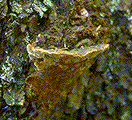
Figure 20a: Phellinus pini fruiting bodies on pine.
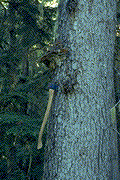 Figure 20b: Phellinus pini fruiting bodies on western hemlock.
Figure 20b: Phellinus pini fruiting bodies on western hemlock.
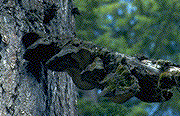 Figure 20c: Phellinus pini fruiting bodies on Douglas-fir.
Figure 20c: Phellinus pini fruiting bodies on Douglas-fir.
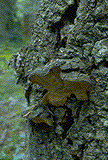 Figure 20d: Phellinus pini fruiting bodies on Douglas-fir.
Figure 20d: Phellinus pini fruiting bodies on Douglas-fir.
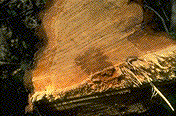 Figure 20e: Incipient red stain in the heartwood of pine.
Figure 20e: Incipient red stain in the heartwood of pine.
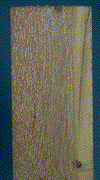 Figure 20f: White pocket rot characteristic of Phellinus pini.
Figure 20f: White pocket rot characteristic of Phellinus pini.
 This Web page has been archived on the Web.
This Web page has been archived on the Web.